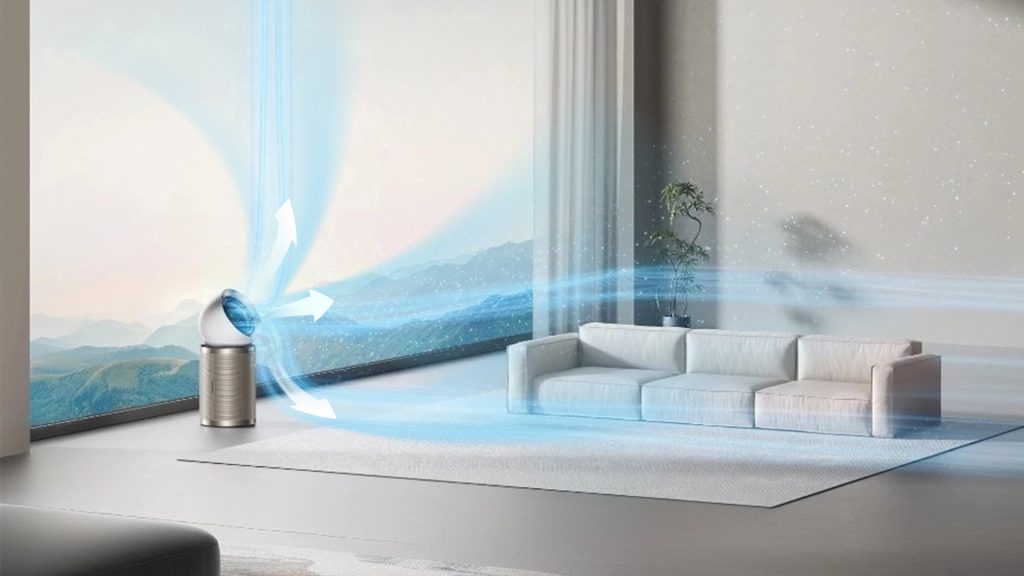
Tired of the pollen season? Always sneezing, having itchy eyes, and congestion. We know how frustrating it can be. Pollen is to blame, as it can easily infiltrate indoor spaces, especially during spring or high-pollen seasons. You may have considered an air purifier to solve the problem, but you might be skeptical about it trapping pollen. So, does an air purifier help with pollen? Yes, air purifiers are highly effective at capturing pollen and are a powerful tool in your fight against pollen allergies.
In this blog, you’ll learn how air purifiers work, what to look for, and how to maximize their effectiveness for real relief.
Table of Contents
How Pollen Affects Indoor Air and Your Health
Pollen is a common allergen and is found on plants. The pollen that causes allergies is 25 microns in diameter. Some may be as small as 2.5 microns or as large as 200 microns. Pollen usually enters homes through windows, doors, clothing, or even pets. Excessive exposure to pollen causes health issues like hay fever or asthma. Due to climate change, the pollen season is lasting 2 months longer than ever before. Therefore, it’s important to maintain your indoor air quality to reduce allergy symptoms.

Can Air Purifiers Remove Pollen?
Yes, air purifiers can effectively remove pollen and offer noticeable relief for allergy sufferers. Pollen grains are typically between 10 and 100 microns in size, and many air purifiers are equipped with HEPA filters capable of capturing particles as small as 0.1 microns. These filters are highly effective at trapping airborne allergens, including pollen, dust mites, mold spores, and pet dander.
For optimal performance, look for a high pollen CADR (Clean Air Delivery Rate), which measures how quickly a unit can clean the air. A higher CADR ensures faster and more efficient removal of allergens from your space. Advanced multi-layer filtration, including a pre-filter for large particles and an activated carbon filter for odors, also enhances performance.
While air purifiers don’t completely eliminate all pollen, they significantly reduce its presence in the air, easing symptoms like sneezing, congestion, and watery eyes.
A great example is the Dreame AirPursue PM20, which meets all the key criteria. It features a powerful H13 True HEPA filter, a high CADR of 400 m³/h, and Even Purification to distribute clean air evenly. Smart functions like human-tracking airflow add extra comfort and efficiency to your allergy defense.

What to Look for in an Air Purifier for Pollen Allergies
Modern air purifiers, like those with advanced sensors or human-tracking technology, can enhance allergy relief by targeting airflow where needed. Here are some essential features for pollen allergy relief.
- HEPA Filtration: Captures 99.97% of particles, including pollen.
- High CADR: A CADR of at least 300 m³/h ensures efficient air cleaning for larger rooms.
- Multi-Layer Filtration: Addresses pollen, dust, and other pollutants like VOCs.
- Smart Features: Real-time air quality monitoring and app control for convenience.
- Quiet Operation: Important for continuous use, especially in bedrooms.
One standout example is the Dreame air purifiers, which combine a high CADR of at least 300 m³/h, a certified H13 True HEPA filter, and Even Purification technology to ensure clean air reaches every corner. Its smart features, including human-tracking airflow, further enhance comfort and efficiency.

Tips to Maximize Air Purifier Effectiveness
Here are some practical tips to improve your air purifier’s pollen allergy filtering efficiency:
- Place the air purifier in high-traffic areas or bedrooms where you spend the most time.
- Run the purifier continuously during peak pollen seasons for consistent filtration.
- Keep windows and doors closed to prevent outdoor pollen from entering your home.
- Vacuum regularly with a HEPA-equipped vacuum to reduce settled allergens.
- Use hypoallergenic bedding to minimize pollen buildup in sleeping areas.
- Replace filters as recommended by the manufacturer to maintain performance.
- Keep the unit away from walls or furniture to allow proper airflow and coverage.
Conclusion
Air purifiers are a smart investment for anyone looking to reduce allergy and asthma symptoms, especially during high pollen seasons. These devices work by capturing airborne allergens like pollen, dust, and pet dander, common triggers for respiratory discomfort.
Models equipped with HEPA filters and a high Clean Air Delivery Rate (CADR) are particularly effective, as they can trap fine particles and circulate clean air more efficiently. It’s essential to choose an air purifier that matches your room size and specific needs for the best results.
Ready to breathe easier this allergy season? Visit Dreame to discover effective air purification solutions that deliver comfort and clean air, day and night.